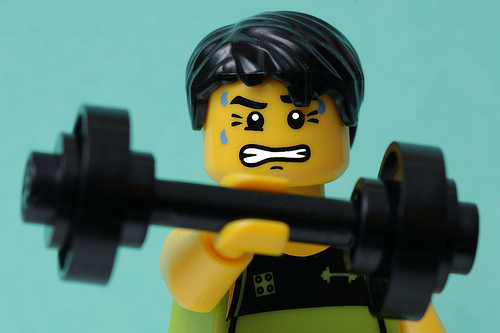Is the nature of weightlifting changing? That question’s starting to seem mute considering how obvious it is. It’s common thought that you need to lift heavy for it to be effective or that endurance athletes don’t need to spend any time in the weight room themselves. Neither idea pans out: minimal workouts can put your muscles on the road to a better destiny than if they’d never lifted a dumbbell; endurance athletes need to keep their entire bodies in top shape to pull off the things that they do or keep their metabolism high.
Kinestology specialist Dr. Stuart Phillips sees ways the make the muscle-workout experience more efficient, by focusing on exercises that work several muscle groups simultaneously. His favorite is the squat – not necessarily with a massive amount of metal resting on the top of your back either. The exercise focuses on the legs, a part of the body whose components, without attention, will atrophy easily with age. The legs contain the largest msucles in the body that in turn can ensure a high metabolic rate even if the arms and back don’t resemble an Olympian sculpture.
That’s incredibly important for runners for obvious reasons, but it also matters that working their arms, upper backs and midsections can increase their ‘efficiency’ as athletes.
It’s not just one muscle, one limb or one muscle group that is getting worked in that situation. Weightlifting is a form – the most popular form – of strength training. So while you can make your legs thick and strong and they have the largest effect on the metabolic rate – every other muscle of focus can improve the effort to keep the weight off. It also contributes to “insulin sensitivity and higher antioxidant status:”
“Strength training is safe for athletes who don’t want to gain muscle mass. The catabolic/anabolic processes “cancel””each other out. Strength training increase fiber type proportion, neuromuscular function, and fuel utilization for better performance.”
There’s so much more to be said about the right way to incorporate strength training – weightlifting – into your exercise routine. But the obviously most important element of whatever regiment you set for yourself is just to start it. Mimic the movements without weights; squat without a bar; work all your major muscle groups with stretches before graduating to dumbbells and heavy machines. The power is literally in you already – you don’t need external tools to get it started.


![[108/365] Ill-advised](http://farm6.staticflickr.com/5003/5268559005_c6f09bdd10.jpg)



